The abruzzo maremma sheepdog
A "modern" dog of noble and ancient roots

The Maremma Sheepdog is an ancient dog breed whose origins are still rather uncertain; we can assume that its ancestors have arrived in Europe and in particular in the central-south Appenine area starting from Tibet following the Asian nomad populations. The diffusion of the reckless guardian must have been encouraged through the commercial relations between the Asians and the Europeans. Hence it is not a coincidence that dogs with similar characteristics can be found in several European regions.
As numerous Latin poets were writing about white guardian dogs, we can assume that the ancestors of the modern Maremma had arrived in central and southern Italy already at that time, following the Greeks and the Phoenicians.
Learn more about this
The story of the Maremma Sheepdog has been told by many, but its origins still remain uncertain and surely not unassailable.
I think that among all those who have ever treated this argument Breber´s book is the one that analyses the the issue more in detail, with unchallengeable scientific data and an enviable amount of perfectly collected documentation. It seems a given fact that our dogs have arrived from Asia following the migrating tribes that have settled in various parts of Europe and have started the most rudimentary kind of breeding.
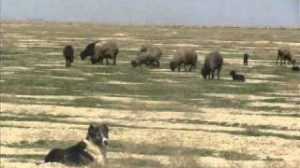
The slight differences that exist between the different breeds of white guardian dogs are mainly the result of different climatic and geographic situations, as well as of selection, but they still retain certain common basic psycho-physical traits.
The Pyrenees Mountain Dog in France, the Kuvatch in Hungary, the Tatra in Poland, the Chuvack in the Czech Republic and so on...
They are all white, with long rough coat, built rather sturdy but at the same time quick and agile, rustic and shy with humans, unless the human in question is a part of his pack. A frugal eater and an attentive guardian, following only its instinct without the need of a special training.
A short re-examination
Le origini del pastore maremmano abruzzese
Maremma sheepdogs have antic origins that loose their traces back in time; most probably the ancestors of this breed came from the Tibetan mountains. Already 2000 years B.C. the Aryans had started its unstoppable movement towards West, searching for new fertile land, bringing with them huge livestock herds.
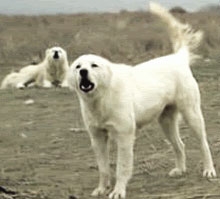
These herds were guarded by the ancestors of all the shepherding breeds that we know nowadays. In the course of the centuries the Aryans arrived at the Azov Sea in Ukraine, and divided into two groups. One continued to move towards Central-Western Europe, the other group turned towards Mediterranean areas like Greece and Turkey. As years passed, not only did these separated folks started to developed different customs, to speak and to look different, but also their dogs changed their appearance as well as their attitude, adapting in the best way possible to new environment and tasks.
Three different families of canine breeds started to evolve from the original Tibetan Mastiff: Canis Massatimus, the Mastiff meant for war action and for property guarding, Canis Venator, a light and very fast hunting dog, and Canis Pastoralis, a livestock guardian, irreplaceable helper for the transhumance shepherding.
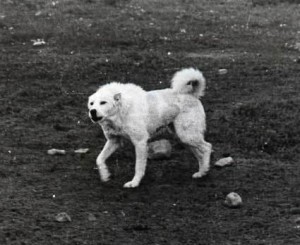
We will never know for sure which ways did these ancestors came to reach the valleys of Latium and Tuscany, or the mountains of Abuzzo, but most probably only those of the first white guardian dogs have survived and became what we know as a Maremma sheepdog today, where its presence was necessary and could be sustained, hence where the economy was based on transhumant shepherding and where the livestock needed a valid protection from the wolves and bears.
How then the stock, which colonized south-central Italy, giving rise over time to our breed, came to our lands cannot be known with certainty. It could have been the nomadic shepherds from beyond the Alps who introduced the first white sheep dogs into Italy, or the Phoenicians with their active maritime trade, or the Greeks when they colonized those Italian territories called "Magna Graecia."
Why not even dream that, some one thousand two hundred years before Christ, alongside Aeneas and his Trojan companions at their landing on the shores of Latium, were the proud ancestors of our Abruzzese Shepherd Maremma?
Evidence of our dog's presence in central Italy, however, is ancient. Already with the Etruscans, in fact, one can find the first evidence of the existence of a dog very similar to our darling.
The roman "Canis Pastoralis"
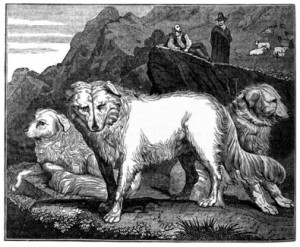
The evidence becomes more vivid and strong in Roman times making our dog practically enter certain history.
In the 2nd century B.C., Marcus Porcius Cato (234 B.C.) speaks of a Canis Pastoralis or Pequarius (sheepherder) in his work De Agri Cultura and distinguishes it sharply from the Canis Epiroticus (Epirotic molossus) with sparse, dark-colored coat, massive skull and body, deputed to guarding the house and farms, and from the Canis Laconicus (Spartan) which was used for hunting and was very fast, light-haired with a sparse coat and brown conformation.
We also find information of our dog in the writings of Colummella (1st century AD) who describes it as a defender of herds from wolves, necessarily white to distinguish itself precisely from the wolf, when in the night the latter attacks the flock and the shepherd intervenes.
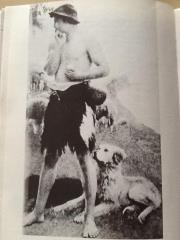
Already the ancient texts describe the work and value of these dogs that protect by instinct, without any need for human intervention, prevailing in them a very high sense of innate responsibility in protecting all that is entrusted to their custody.
Since that first description two thousand years ago nothing has changed in our dog, and this is perhaps the main reason for the difference from all those breeds, some even very widespread, which have instead been constructed and manipulated by man at his pleasure and which even today continue to undergo modifications to suit certain fashions or trends.
